With the advances in Apple SoCs and the latest iterations from AMD, Intel has been playing catch-up for a while now. But that is about to change with the announcement of its latest laptop-focused CPU, Meteor Lake. Unveiled at the Intel Technology Tour in Malaysia, these processors promise to redefine what we can expect from laptops and other portable devices.
First shown in Malaysia, Meteor Lake represents one of Intel’s most significant architectural shifts. Built on the next-generation Intel 4 process node, these CPUs are designed for unprecedented power efficiency. The architecture consists of four unique tiles—Compute, SoC, GPU, and IO—connected through Intel’s industry-leading Foveros 3D packaging technology.
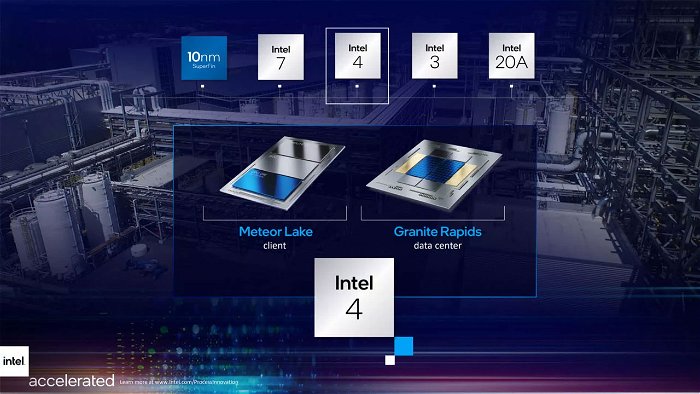
Meteor Lake looks to combine many of the lessons Intel has learned over the years to make a chip ready to take on modern workflows. Much like what we saw in Alder Lake, the Compute tile features the latest-generation E-cores and P-cores, both of which introduce new microarchitecture enhancements. These cores are ideal for a wide range of workloads, from high-performance computing to low-power tasks, offering a balanced and optimized computing experience.
The System-on-a-Chip (SoC) tile is where things get even more interesting. It integrates a Neural Processing Unit (NPU), bringing power-efficient AI capabilities to PCs. This is a first for Intel and marks a significant milestone in bringing AI at scale to client platforms. The SoC tile also includes new low-power E-cores, Wi-Fi 6E, Bluetooth, and media support for 8K HDR, AV1 codecs, HDMI 2.1, and DisplayPort 2.1 standards.
The GPU tile incorporates Intel’s Arc Graphics architecture, delivering discrete-level performance in an integrated form factor. This leap in graphics capabilities enables Meteor Lake to achieve up to 2x gen-on-gen performance, making it ideal for gaming, 3D applications, and media rendering.
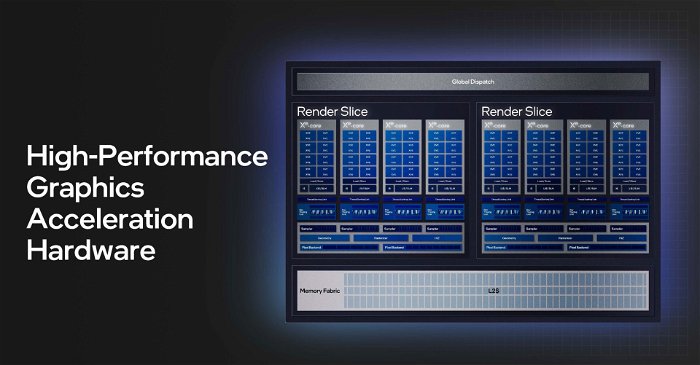
While Intel graphics on mobile have been serviceable for the past few years, with Meteor Lake and Arc, it finally looks like gaming is possible. We were impressed with what Intel Arc brought to the table for graphics, so it is amazing to see them add it directly to their mobile CPU offering. With how fast the drivers are evolving, this is a notable upgrade from standard integrated graphics and should allow for some gaming or even better content creation, provided it is paired with a capable discrete GPU.
In a demo while in Mylasia, someone from Intel showed Forza Horizon 5 and Dying Light 2 running on a laptop at a decent frame rate and visual fidelity. It is hard to say how it will work in practice, not knowing all the settings used, but it looked better than I have seen Intel laptops without dedicated GPUs run. This is a significant milestone in integrated graphics, offering discrete-level performance in a form factor that’s ideal for mobile computing. Let’s take a closer look at what makes this GPU tile a game-changer.
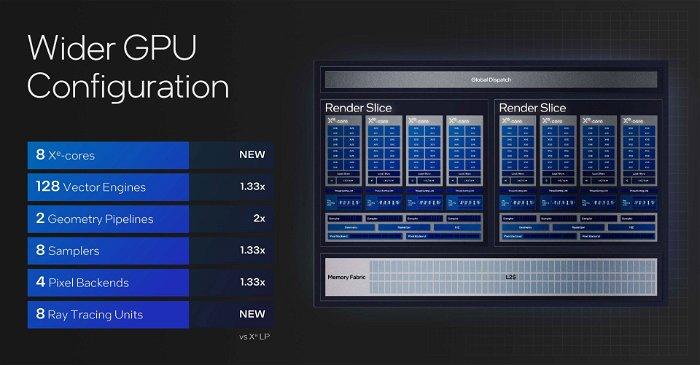
Like its desktop counterpart, the Xe-LPG microarchitecture supports a modern feature set that includes DX12 Ultimate with hardware-accelerated ray tracing, variable rate shading, and sampler feedback. These features are generally found in high-end discrete GPUs, making their inclusion in an integrated GPU a significant achievement. Gamers and content creators can expect a level of graphical fidelity and performance previously unattainable in integrated graphics solutions.
If that were not enough, Intel also boasts substantial improvements in the frequency and voltage curve for Meteor Lake’s GPU. This enables the GPU to run at a much lower minimum voltage while reaching a much higher maximum clock speed. The result is a GPU that can be configured for higher performance and efficiency, making it ideal for both gaming and productivity tasks.
The GPU tile is designed with disaggregation in mind, allowing it to interact directly with the media engine for greater efficiency. This includes support for the latest codecs up to 8K60 HDR and additional support for dual frame buffer compression, which further optimizes efficiency for designs with two displays. This means that creators have a much more capable machine for streaming, gaming or content creation.
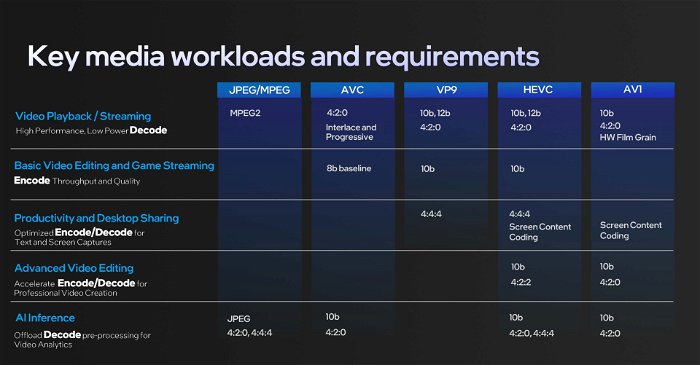
Last but not least, the IO tile features Intel’s industry-leading connectivity options, including integrated Thunderbolt 4 and PCIe Gen 5.0. This ensures that Meteor Lake-powered devices will offer the fastest and most reliable data transfer speeds. It is also great to see Intel include all the latest advancements, so most Meteor Lake laptops should be more than capable of delivering great performance and features to ensure you are on the cutting edge.
Since we are in 2023, and everyone is talking about generative AI, it makes sense to see Intel include support for AI directly in the SoC, which could mean less cloud processing for some AI workflows. Intel’s Meteor Lake architecture brings a multi-faceted approach to AI, integrating capabilities across the CPU, GPU, and a dedicated Neural Processing Unit (NPU). The GPU is optimized for AI in media and 3D applications, offering performance parallelism and high throughput. The CPU is designed for quick, low-latency AI tasks, ideal for lightweight applications.
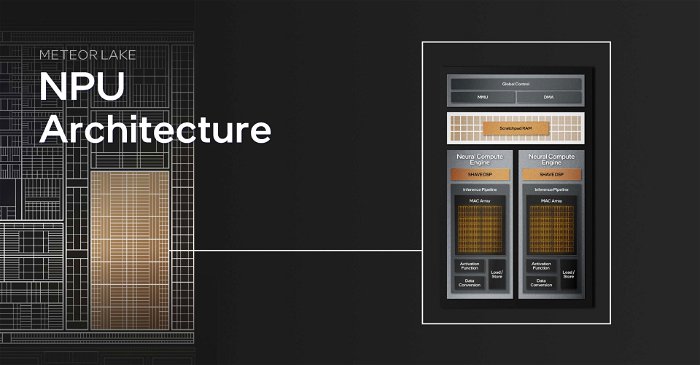
The standout feature is the NPU, a first in Intel’s client computing. It’s engineered for low-power, high-quality AI computing, making it perfect for tasks that otherwise require cloud-based solutions such as Stable Diffusion. The NPU supports Microsoft’s new compute driver model (MCDM) for enhanced security and efficient workload management. Its multi-engine architecture allows for parallel computing, featuring an inference pipeline for efficient neural network execution and a specialized DSP engine for AI tasks. This comprehensive AI integration positions Meteor Lake as a transformative force in client computing, promising low-latency, cost-effective, and privacy-centric AI experiences.
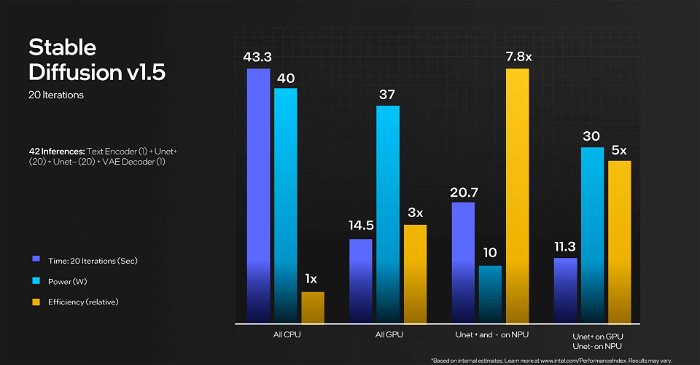
The Intel 4 process node is a significant part of Intel’s IDM 2.0 strategy, aiming to deliver five nodes in four years. Utilizing extreme ultraviolet (EUV) lithography, Intel 4 is optimized for high-performance computing applications and offers more than a 20% isopower performance versus Intel 7. This sets the stage for Intel’s future nodes, including Intel 3 and the Angstrom-era Intel 20A and 18A.
With Meteor Lake, Intel seems to be building on what users expect from a laptop CPU and introducing major architectural and design changes that should have a noticeable impact on the user experience. From its breakthrough architecture and AI capabilities to its robust graphics and security features, Meteor Lake has the potential to set new standards in performance, efficiency and versatility.
As we move into an era where computing is increasingly ubiquitous and integrated into our daily lives, Meteor Lake promises a much more powerful laptop-focused offering, ready for a range of tasks and games. If Intel can deliver, Meteor Lake CPUs could set a new standard for what you expect from a laptop for work and play in the future. We are still missing details about the specific SKUs and how the range will pan out, but from everything we do know, Meteor Lake should be an exciting offering.




